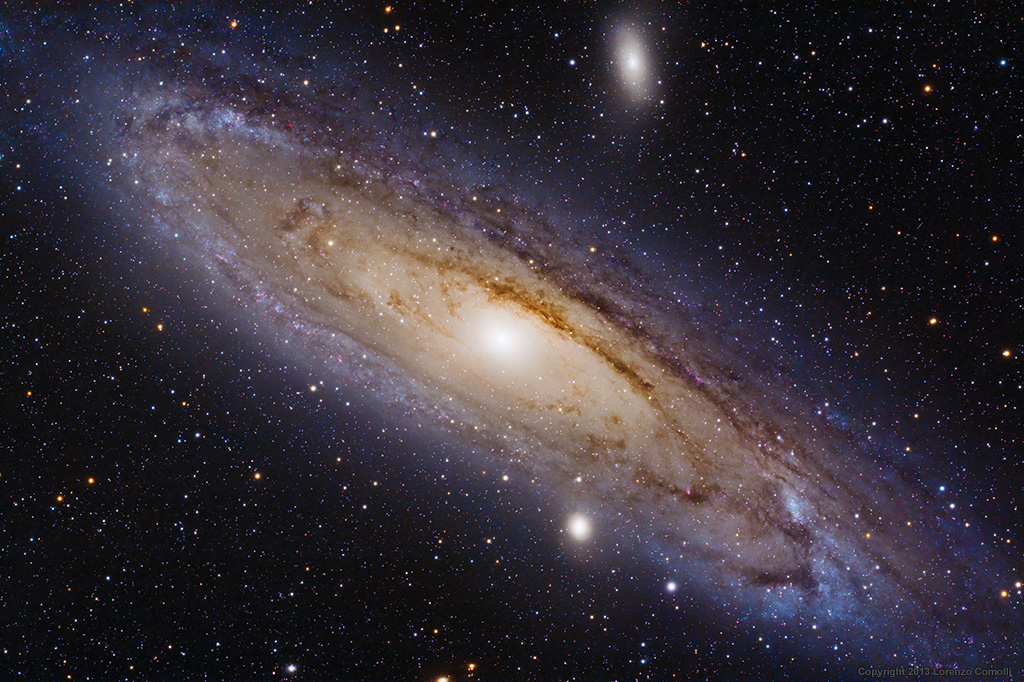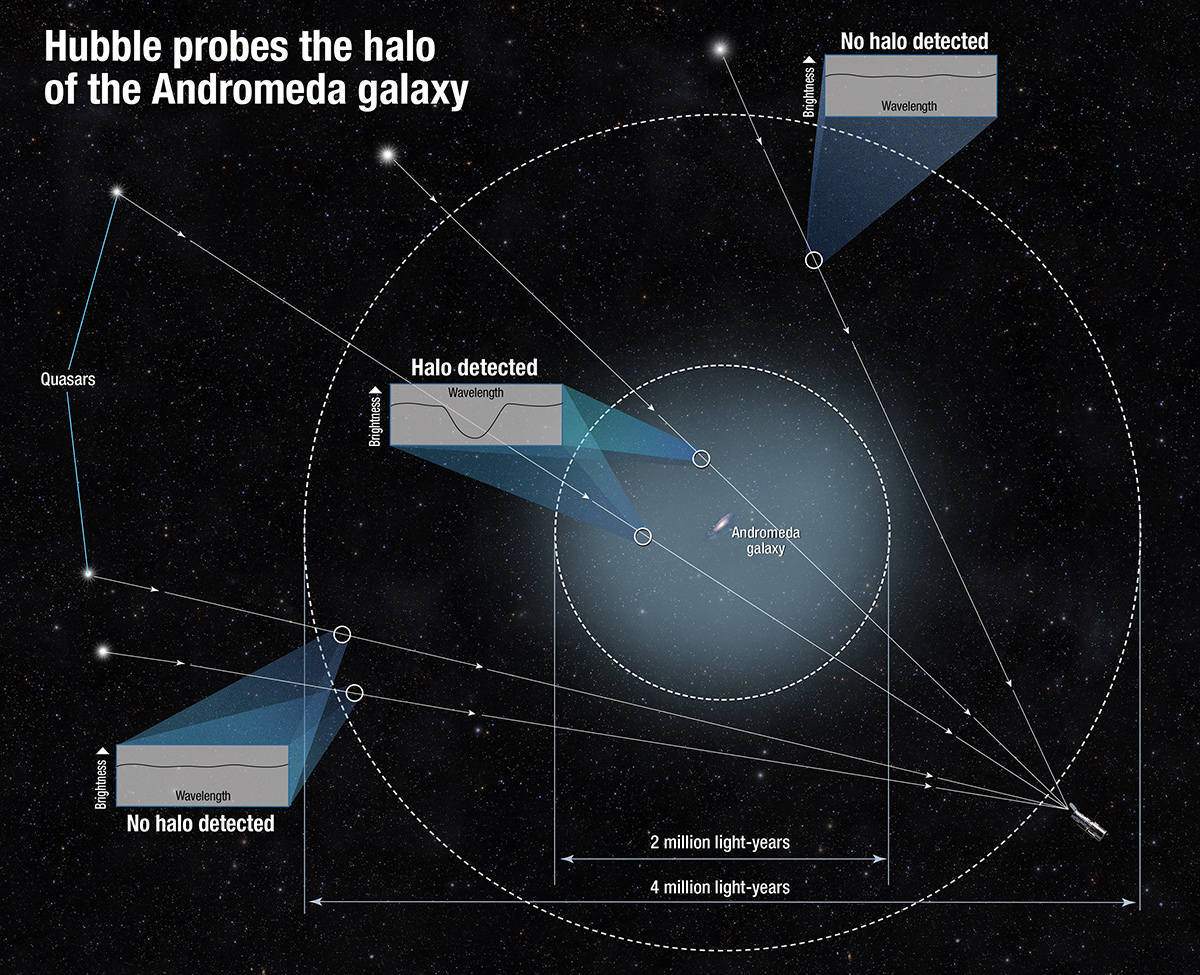Andromeda Galaxy Is Surrounded by a Supersized Gas Halo

One of the Milky Way's closest galactic neighbors is surrounded by a much bigger halo of gas than previously thought, new observations from the Hubble Space Telescope reveal.
The halo of the Andromeda Galaxy — the nearest spiral galaxy to the Milky Way — is about six times larger and 1,000 times more massive than measured before, the new observations show. It is so large that if the halo were visible from Earth, it would be 100 times the diameter of the full moon — or about the size of two basketballs held at arm's length.
"Halos are the gaseous atmospheres of galaxies," said lead researcher Nicholas Lehner, a physicist at the University of Notre Dame, in Indiana, in a statement from NASA. "The properties of these gaseous halos control the rate at which stars form in galaxies, according to models of galaxy formation." [Amazing Photos of the Andromeda Galaxy]

Scientists spotted the dark halo by looking at bright objects that are behind the gas and seeing how the light changes. Specifically, they used quasars, or galaxies with huge black holes at their cores that are extremely bright despite being far away.
As the light leaves the quasar, some of the gas in the halo absorbs the light and makes the quasar appear darker. This is most apparent when it is observed in ultraviolet light (short wavelengths of light). Measuring the dip in brightness allows astronomers to figure out the amount of gas in front of the quasar.
Because ultraviolet light is absorbed by Earth's atmosphere, the Hubble telescope was ideally placed to see the changes in brightness because it orbits above the planet.
A previous program by Hubble, called the Hubble Cosmic Origins Spectrograph (COS)-Halos program, observed 44 galaxies far away and saw halos. Andromeda, however, is the first close-up galaxy where a halo has been observed.
Get the Space.com Newsletter
Breaking space news, the latest updates on rocket launches, skywatching events and more!
The authors of the new research say large-scale simulations of galaxies suggest the halo is the same age as the rest of Andromeda, which lies 2.5 million light-years away from Earth. Additionally, the halo is full of elements that are heavier than hydrogen and helium. This indicates at least some of the gas comes from supernovas, explosions of old stars that fused hydrogen and helium into heavier elements through their lifetimes.
As for our own galaxy — the Milky Way — it's possible that it also hosts a halo, but that it's invisible from Earth. "It's a case of not being able to see the forest for the trees," the NASA statement said.. If our galaxy does have a halo, it's possible that it is starting to merge with that of Andromeda's. Our two galaxies are expected to merge into one galaxy starting in roughly 4 billion years.
Follow Elizabeth Howell @howellspace, or follow us @Spacedotcom, Facebook and Google+. Original article on Space.com.
Join our Space Forums to keep talking space on the latest missions, night sky and more! And if you have a news tip, correction or comment, let us know at: community@space.com.

Elizabeth Howell (she/her), Ph.D., was a staff writer in the spaceflight channel between 2022 and 2024 specializing in Canadian space news. She was contributing writer for Space.com for 10 years from 2012 to 2024. Elizabeth's reporting includes multiple exclusives with the White House, leading world coverage about a lost-and-found space tomato on the International Space Station, witnessing five human spaceflight launches on two continents, flying parabolic, working inside a spacesuit, and participating in a simulated Mars mission. Her latest book, "Why Am I Taller?" (ECW Press, 2022) is co-written with astronaut Dave Williams.









